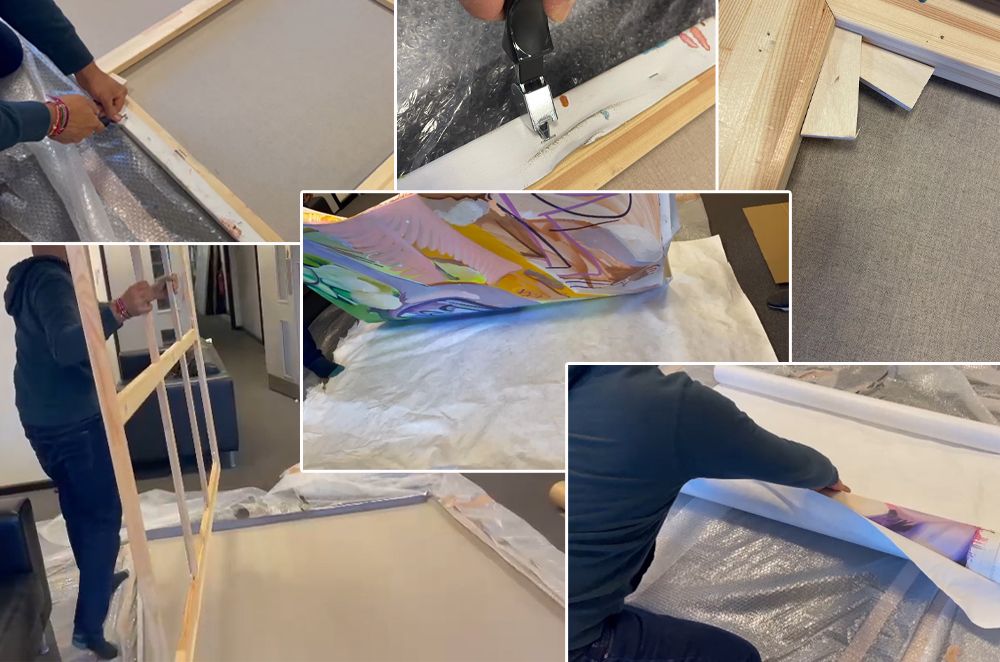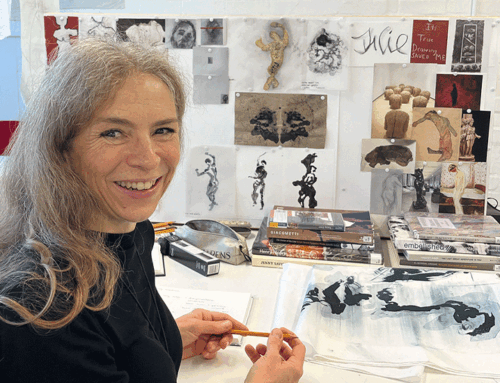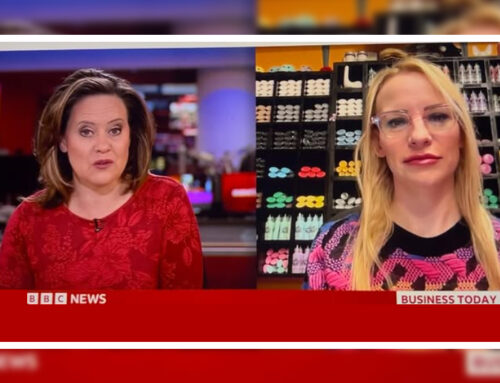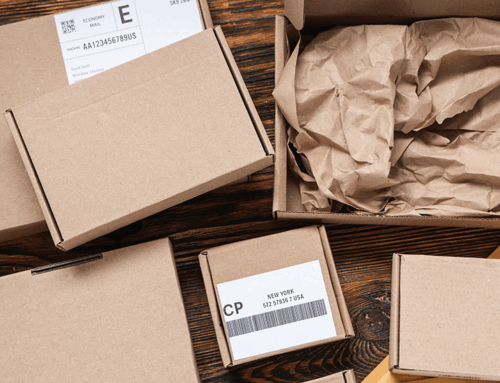Is to remove it from the stretchers and roll it, doing so creates a smaller surface area for packing (reducing cost) and a dense protected roll to prevent flexing and cracking of the surface (to minimise risk of damage).
A well stretched canvas is held taut and square by corner wedges in each joint of the framework – to roll the piece the artwork is placed face down (on an appropriate sheet for protection) whilst fixing-pins are removed, the wedges remain in place during this process to avoid the canvas moving or flexing.
The frame is removed from the canvas, never the other way round!
We use a breathable membrane to roll the canvas in – this prevents any sticking and rubbing of the canvas surface – the membrane is slid underneath the face of the canvas and the rolling process is “face outwards” with a cardboard inner tube used as internal support to keep the roll rigid.
The entire surface of the canvas must be protected by the membrane and in this instance (in order not to waste any packaging materials), we cut and turn the membrane to complete the roll. Once the roll is complete, the membrane is fastened with paper tape and then placed into an outer cardboard tube.
As this example artwork was due to travel a few thousand miles in the hold of an aircraft and would be handled by conveyors and forklift trucks in and out of vehicles, (a part of the art buying process that buyers and sellers do not always envisage), extra protection was required. We sent it to our packers to have a bespoke outer plywood case made for it.


